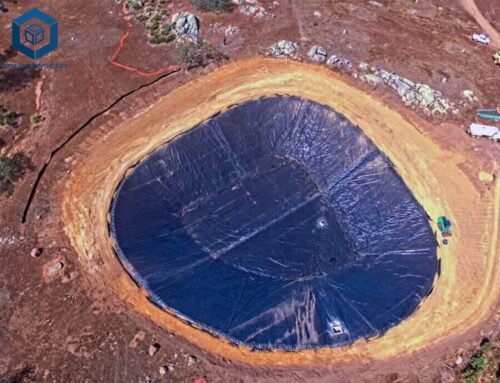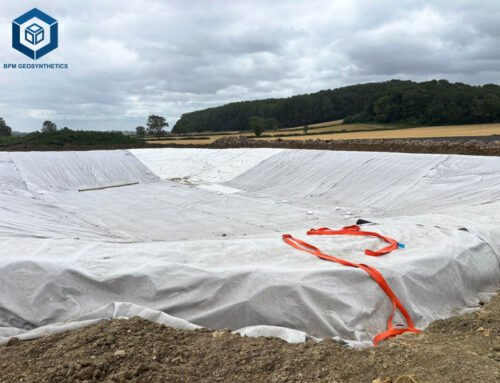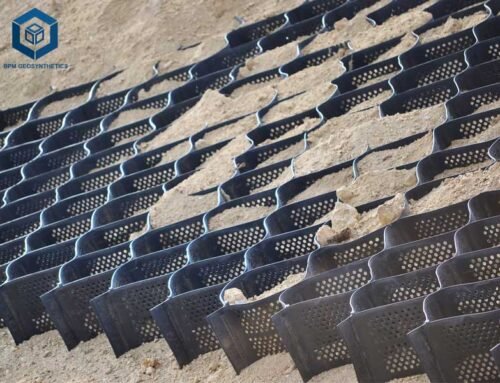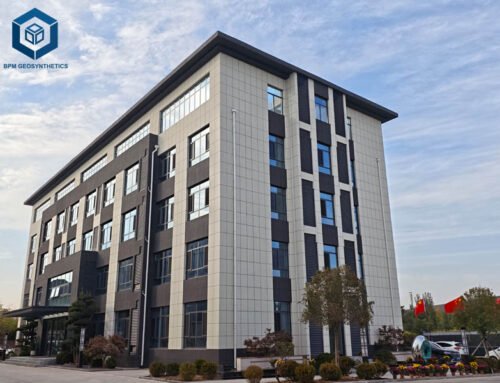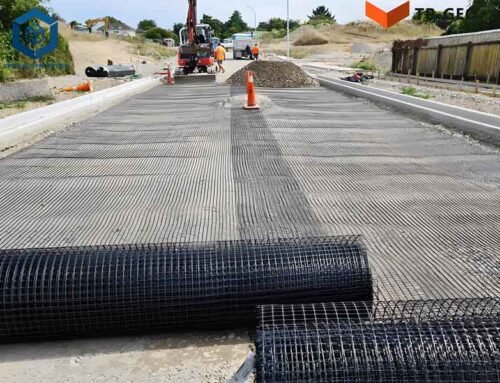Effective water management is a cornerstone of successful landscaping, construction, and civil engineering projects. Poor drainage can lead to waterlogging, soil erosion, and structural damage, resulting in costly repairs and compromised project outcomes. Among the innovative solutions available, drain cell mats have emerged as a highly effective tool for subsurface drainage.
This comprehensive guide explores what drain cell mat, their specifications, functions, advantages, disadvantages, and key considerations for selecting the best product for your project. By comparing drain cell mats with drain nets, we aim to provide valuable insights to help you make informed decisions for optimal water management.
1. What Is a Drain Cell Mat?
A drain cell mat is a lightweight, modular drainage system designed to manage subsurface water flow while supporting structural loads. Typically made from 100% recycled polypropylene (PP) or high-density polyethylene (HDPE), drain cell mats consist of interconnected, three-dimensional honeycomb-like cells that create a void space for water to flow through. This structure allows for rapid water capture and discharge, preventing waterlogging and promoting healthy soil conditions. Drain cell mats are often used in applications such as terrace gardens, green roofs, and sports fields, where efficient drainage and structural stability are critical.
Drain Cell Mat vs. Drain Net
While drain cell mats are three-dimensional, modular units, drain nets (also known as geonets) are planar, net-like structures made from HDPE with a bi-planar or tri-planar core, often sandwiched between geotextile layers. Drain nets are designed for lateral water flow in large-scale applications like landfills and road bases, whereas drain cell mats excel in vertical and lateral drainage for urban and landscaping projects. Understanding these differences is key to choosing the right system for your needs.
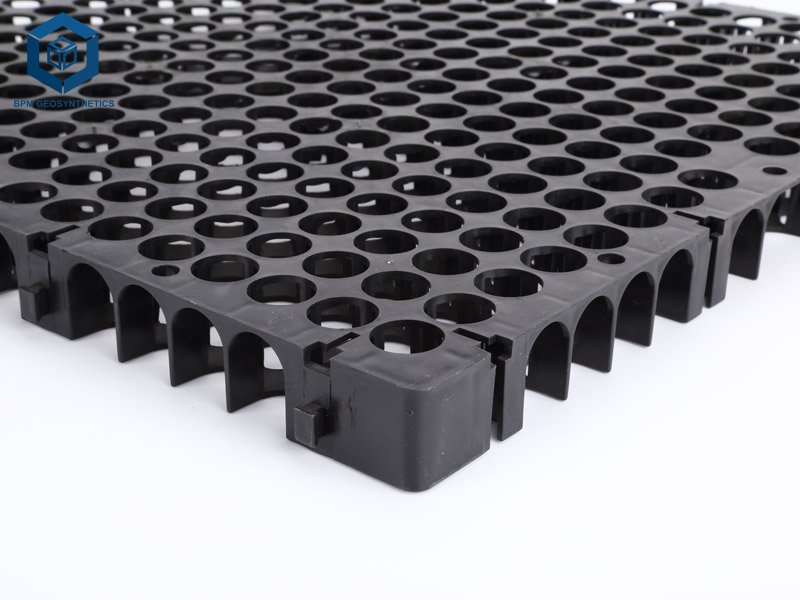

2. Key Specifications of Drain Cell Mat
To select the appropriate drain cell mat, it’s essential to understand its technical specifications and performance parameters. Below is a detailed breakdown of typical specifications based on industry standards and product data from reputable manufacturers.
2.1 Drain Cell Mat – Material Composition
- Primary Material: 100% recycled polypropylene (PP) or HDPE.
- Durability: Resistant to soil-borne chemicals, bacteria, UV radiation, and environmental degradation, with lifespans exceeding 50–100 years under optimal conditions.
- Eco-Friendly: Made from recycled materials, contributing to sustainability and LEED certification.
2.2 Drain Cell Mat – Structural Design
- Dimensions: Common sizes include 250 mm x 500 mm x 20 mm or 30 mm (height). Some products, like the VersiCell® system, offer larger pre-assembled panels for faster installation.
- Void Ratio: 90–95%, allowing for high water storage and rapid drainage.
- Cell Structure: Honeycomb-like, three-dimensional grid with interlocking features for seamless expansion.
2.3 Drain Cell Mat – Performance Parameters
- Compressive Strength: Up to 100–200 tonnes/m² (approximately 1,000–2,000 kPa), suitable for high-load applications like sports fields and parking lots.
- Flow Capacity: 10–20 liters per second per meter, ensuring rapid water evacuation in heavy rainfall.
- Weight: Lightweight at 1–3 kg/m², reducing structural load compared to traditional gravel systems (up to 98% lighter).
- Thickness: Available in 20 mm and 30 mm profiles, with thicker mats offering higher compressive strength and flow capacity.
2.4 Drain Cell Mat – Additional Features
- Interlocking Design: Allows horizontal and vertical connections for flexible installation in various geometries.
- Thermal Insulation: Acts as a protective layer over waterproofing membranes, reducing heat transfer and thermal expansion risks.
- Cost: Typically priced at $10–$25 per m², depending on thickness and supplier.
These specifications make drain cell mats a versatile and high-performance solution for a range of drainage challenges, particularly in urban environments with limited space and high runoff.
3. What Are Functions of Drain Cell Mat?
Drain cell mats serve multiple functions that enhance water management, structural integrity, and sustainability in various applications. Below are the primary functions, supported by practical examples and data.
3.1 Drain Cell Mat – Efficient Water Drainage
Drain cell mats create a void space that facilitates rapid water flow, preventing waterlogging and reducing hydrostatic pressure. With a flow capacity of 10–20 L/s/m, they are highly effective in high-rainfall areas, ensuring quick evacuation of excess water. For example, in a 2023 Singapore green roof project, drain cell mats managed stormwater runoff at 15 L/s/m, preventing water damage to the underlying structure.
3.2 Drain Cell Mat – Soil Erosion Control
By providing a stable base for soil and vegetation, drain cell mats minimize erosion on slopes and embankments. Their high compressive strength (up to 200 tonnes/m²) ensures stability under heavy loads, making them ideal for landscaping projects like terrace gardens and green walls.
3.3 Drain Cell Mat – Waterproofing Membrane Protection
Drain cell mats act as a protective layer over waterproofing membranes, reducing the risk of cracking due to thermal expansion or mechanical stress. This function is critical in roof gardens, where membranes are exposed to environmental fluctuations.
3.4 Drain Cell Mat – Water Storage and Retention
The high void ratio (90–95%) allows drain cell mats to store water for passive irrigation, maintaining optimal soil moisture for plant growth. This is particularly beneficial in green roofs and planter boxes, where water retention supports vegetation during dry periods.
3.5 Drain Cell Mat – Thermal and Sound Insulation
When installed under roof decks or pavers, drain cell mats reduce heat transfer and sound transmission, enhancing energy efficiency and occupant comfort. Studies show they can lower heat transfer by up to 20% compared to gravel-based systems.
3.6 Drain Cell Mat – Load Distribution
The robust structure of drain cell mats distributes heavy loads evenly, making them suitable for high-traffic areas like sports fields and fire tender pathways. Their compressive strength supports loads from mechanical equipment, such as bobcats, without deformation.
4. What Are Advantages of Drain Cell Mat?
Drain cell mats offer numerous benefits that make them a preferred choice for modern drainage systems. Below are the key advantages, supported by industry insights.
4.1 High Drainage Efficiency
With a void ratio of 90–95% and flow rates of 10–20 L/s/m, drain cell mats outperform traditional gravel systems, which have flow rates of 1–5 L/s/m. This efficiency reduces flood risks and ensures healthy plant growth by preventing waterlogging.
4.2 Lightweight and Low Structural Load
Weighing 1–3 kg/m², drain cell mats are up to 98% lighter than gravel, reducing the structural load on roofs and terraces. This allows for thinner soil layers and supports the use of mature plants in landscaping projects.
4.3 Eco-Friendly and Sustainable
Made from 100% recycled polypropylene, drain cell mats contribute to sustainability and align with green building standards like LEED. Their long lifespan (50–100 years) minimizes replacement costs and environmental impact.
4.4 Easy Installation
The modular, interlocking design simplifies installation, reducing labor costs by up to 30% compared to drain nets or gravel systems. Large pre-assembled panels, like those offered by VersiCell®, further streamline the process.
4.5 High Compressive Strength
With strengths of 100–200 tonnes/m², drain cell mats support heavy loads, making them ideal for sports fields, parking lots, and podium systems. This durability ensures long-term performance under extreme conditions.
4.6 Versatility Across Applications
Drain cell mats are adaptable to various projects, including green roofs, planter boxes, basements, and sports fields. Their ability to interlock in complex geometries makes them suitable for both small-scale and large-scale installations.
4.7Reduced Maintenance
The open structure of drain cell mats minimizes clogging, reducing maintenance costs to less than $200 annually for a 1,000 m² installation, compared to $500–$1,000 for drain nets in high-sediment environments.
5. What Are Disadvantages of Drain Cell Mat?
While drain cell mats offer significant benefits, they also have limitations that should be considered before selection.
5.1 Higher Initial Cost
Priced at $10–$25 per m², drain cell mats are more expensive than drain nets ($5–$15 per m²) or gravel systems ($2–$10 per m²). This can be a barrier for budget-conscious projects, though long-term savings in maintenance and structural reinforcement offset the cost.
5.2 Limited Lateral Flow
Drain cell mats are optimized for vertical and localized drainage, making them less effective for lateral water flow over large areas compared to drain nets, which excel in applications like landfills and highways.
5.3 Quality Variability
Some user reviews report issues with brittle or low-quality drain cell mats, particularly from certain suppliers. For example, Flipkart reviews noted that some mats were “hard and brittle” and prone to breaking during installation. Selecting reputable manufacturers is crucial to avoid such issues.
5.4 Specialized Applications
Drain cell mats are best suited for urban and landscaping projects, limiting their versatility compared to drain nets, which are used in broader applications like road construction and erosion control.
5.5 Installation Challenges in Uneven Terrains
Uneven surfaces can complicate installation, requiring additional leveling and anchoring to ensure effective drainage. This can increase labor costs in complex projects.
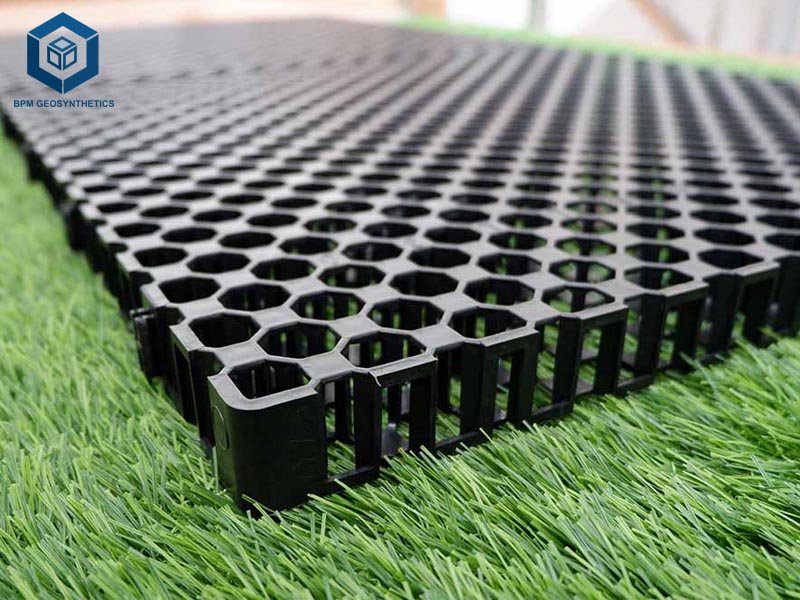
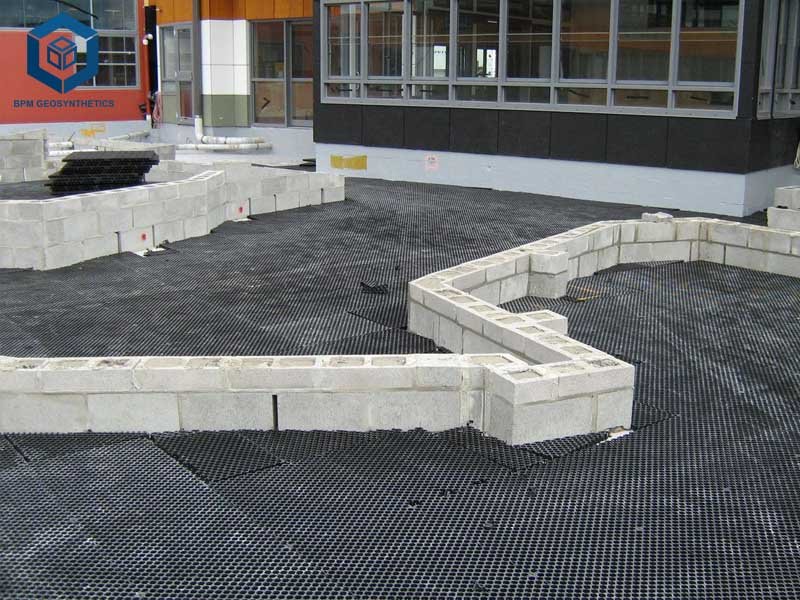
6. Main Considerations When Choosing the Best Drain Cell Mat
Selecting the right drain cell mat requires careful evaluation of project requirements, environmental conditions, and product specifications. Below are the key considerations to guide your decision.
6.1 Project Requirements
- Application Type: Determine whether the mat is for a green roof, sports field, or planter box. For high-load areas, choose mats with compressive strengths above 1,000 kPa.
- Area Size: Modular mats (e.g., 250 mm x 500 mm) are ideal for small spaces, while pre-assembled panels suit larger areas for faster installation.
- Water Flow Needs: For high-rainfall areas, prioritize mats with flow rates of 15–20 L/s/m.
6.2 Material and Durability
- Material Quality: Opt for 100% recycled polypropylene or HDPE for durability and sustainability. Verify resistance to chemicals, UV, and bacteria.
- Compressive Strength: Ensure the mat supports the expected load (e.g., 100 tonnes/m² for sports fields).
- Lifespan: Choose products with a proven lifespan of 50+ years to minimize replacement costs.
6.3 Installation and Maintenance
- Ease of Installation: Select interlocking mats for quick setup. Pre-assembled panels reduce labor time by up to 30%.
- Maintenance Needs: Opt for mats with high void ratios to minimize clogging and maintenance costs.
- Geotextile Compatibility: Ensure the mat is compatible with non-woven geotextile fabrics for filtration and protection.
6.4 Cost and Budget
- Upfront Cost: Compare prices across suppliers, typically $10–$25 per m². Bulk purchases or packs (e.g., 10 or 32 units) can reduce costs.
- Long-Term Value: Consider maintenance and structural savings. Drain cell mats can save up to 20% over their lifespan compared to gravel systems.
6.5 Supplier Reliability
- Reputation: Choose suppliers with positive reviews and proven quality, such as Singhal Industries or Farmers Castle. Avoid products with reported brittleness or poor durability.
- Customer Support: Select suppliers offering reliable support for installation guidance and product inquiries.
- Certifications: Look for products meeting international standards (e.g., ISO 9001) for quality assurance.
6.6 Environmental Impact
- Sustainability: Prioritize mats made from recycled materials to support green building goals.
- LEED Certification: Choose products that contribute to LEED credits for sustainable construction.
7. Final Thoughts
Drain cell mats are a game-changer in modern water management, offering a lightweight, durable, and eco-friendly solution for subsurface drainage. Their high compressive strength, rapid drainage capacity, and versatility make them ideal for urban applications like green roofs, terrace gardens, and sports fields. Compared to drain nets, which are better suited for large-scale lateral drainage, drain cell mats excel in localized, high-load environments, providing superior water management and structural protection.
While their higher initial cost and limited lateral flow may pose challenges, the long-term benefits—such as reduced maintenance, enhanced sustainability, and structural savings—make drain cell mats a worthwhile investment. By carefully evaluating project requirements, material quality, and supplier reliability, you can select the best drain cell mat to ensure a successful, sustainable project.
For further guidance, consult with a drainage system supplier or civil engineering professional to assess site-specific needs and optimize your drainage solution. With the right drain cell mat, you can achieve efficient water management, protect your structures, and create thriving landscapes.
Any questions or inquiries, please contact BPM Geosynthetics.

